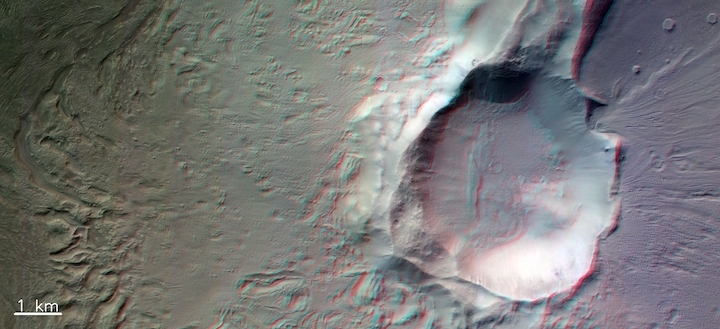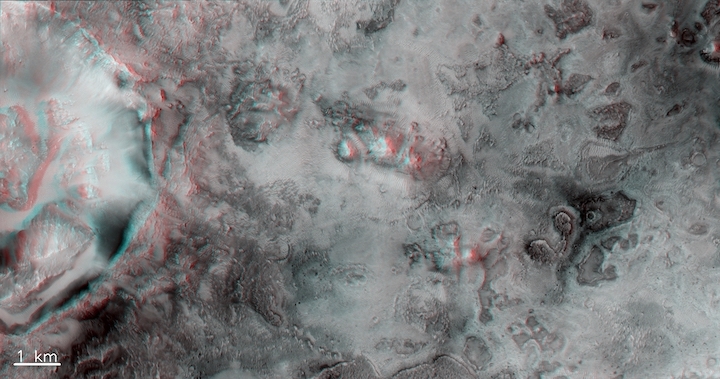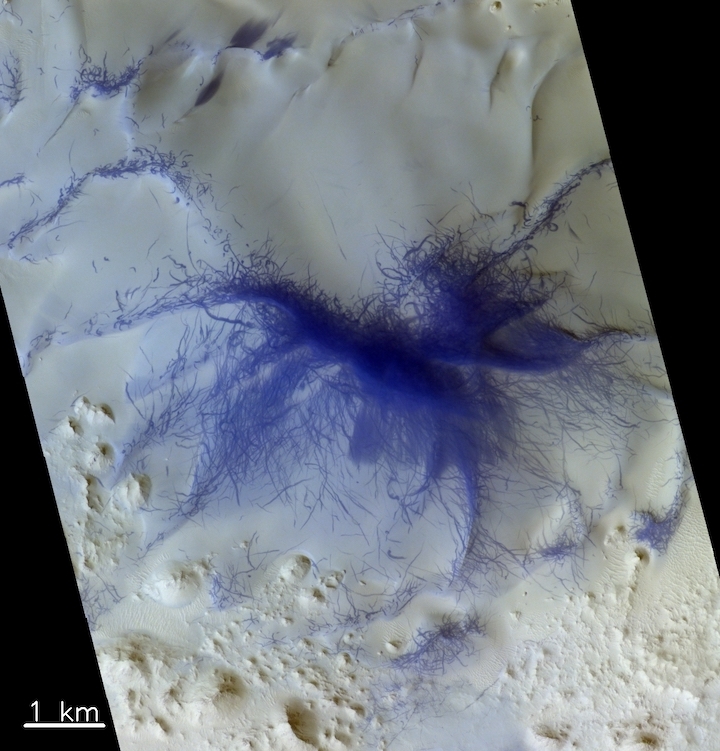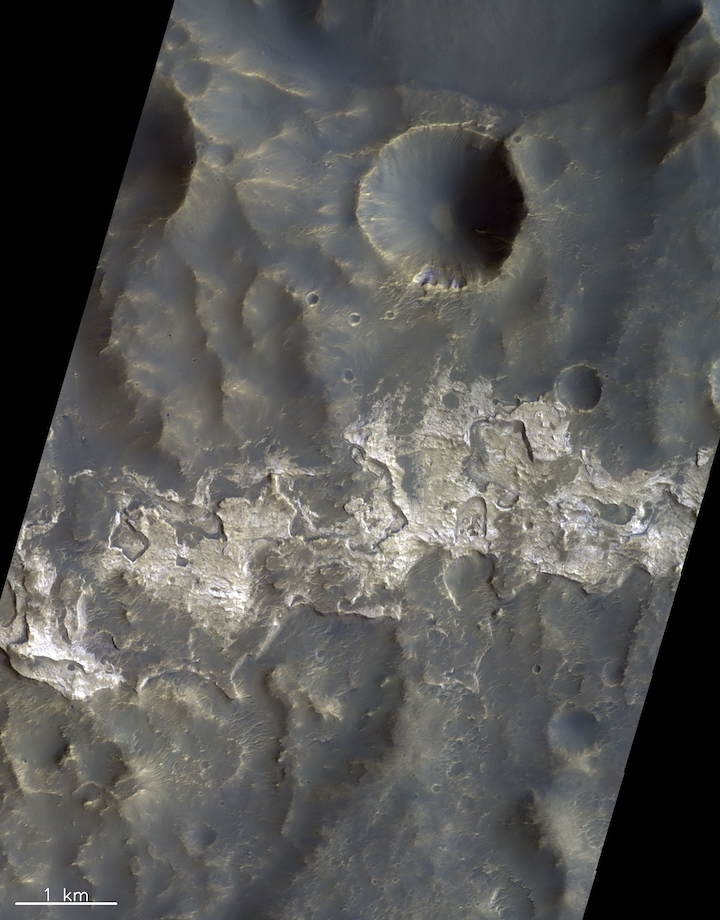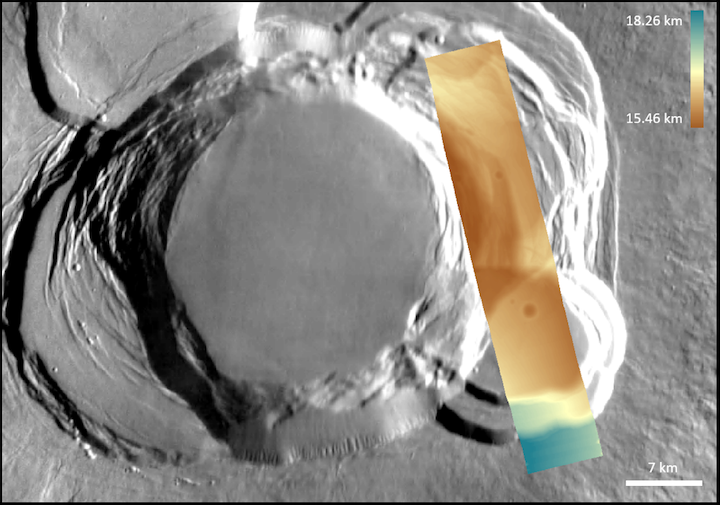15.03.2019
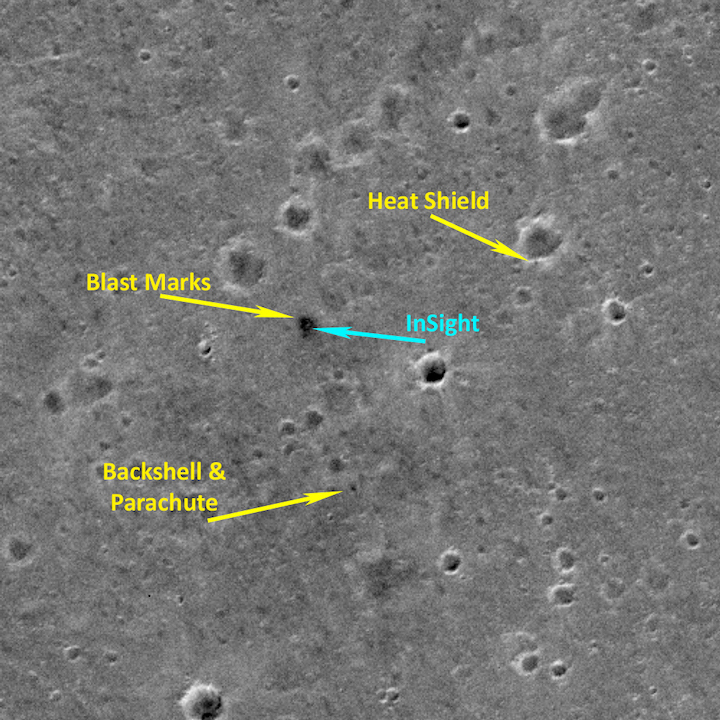
Three years ago, on 14 March 2016, the Bernese Mars camera CaSSIS started its journey to Mars with the "ExoMars Trace Gas Orbiter" spacecraft. The camera system developed at the University of Bern has been observing Mars from its primary science orbit since April 2018 and provides high-resolution, colour images of the surface. On 2 March 2019, CaSSIS also delivered its first image of InSight, NASA's lander on Mars.
-
ExoMars is a space mission of the European Space Agency (ESA) in cooperation with the Russian space agency Roskosmos. ExoMars stands for exobiology on Mars: for the first time since the 1970s, active research is being conducted into life on Mars. So called trace gases including methane and their sources are being detected by the Trace Gas Orbiter (TGO) while the ExoMars programme as a whole (combining TGO with a rover, Rosalind Franklin, due to launch next year) will investigate how the water and the geochemical environment has changed with time.
The Colour and Stereo Surface Imaging System (CaSSIS) on board the ExoMars Trace Gas Orbiter (TGO) was developed by an international team led by Prof. Nicolas Thomas of the Center for Space and Habitability (CSH) at the University of Bern. The TGO launched three years ago today, on 14 March 2016. It arrived at Mars on 19 October that year, and spent over a year demonstrating the aerobraking technique needed to reach its science orbit, starting its prime mission at the end of April 2018.
Hello, InSight
Amongst a new showcase of images from CaSSIS is an image of NASA’s InSight lander – the first time a European instrument has identified a lander on the Red Planet. InSight arrived on Mars on 26 November 2018 to study the interior of the planet. Images of the lander have already been returned by NASA’s Mars Reconnaissance Orbiter, these are the first images from TGO.
The panchromatic image was captured by CaSSIS on 2 March 2019, and covers an area of about 2.25 x 2.25 km. At that time, InSight was hammering a probe into the surface in order to measure heat coming from inside the planet. The CaSSIS view shows InSight as a slightly brighter dot in the centre of the dark patch produced when the lander fired its retro rockets just before touchdown in the Elysium Planitia region of Mars, and disturbed the surface dust. The heat shield released just before landing can also be seen on the edge of a crater, and the backshell used to protect the lander during descent is also identified.
“The TGO is being used to relay data from InSight to Earth,” says Nicolas Thomas, CaSSIS Principal Investigator, from the University of Bern. “Because of this function, to avoid uncertainties in communications, we had not been able to point the camera towards the landing site so far – we had to wait until the landing site passed directly under the spacecraft to get this image.”
CaSSIS is expected to provide additional support to the InSight team by observing the surface of Mars in the surrounding area. If the seismometer picks up a signal, the source might be a meteorite impact. One of CaSSIS’s tasks will be to help search for the impact site, which will allow the InSight team to better constrain the internal properties of Mars near the landing site.
The image of InSight also demonstrates that CaSSIS will be able to take pictures of the future ExoMars mission. The mission comprises a rover – named Rosalind Franklin – together with a surface science platform, and is due to be launched in July 2020, arriving at Mars in March 2021. TGO will also act as the data relay for the rover.
Science showcase
Also released today is a selection of images capturing the impressive science capabilities of CaSSIS, ranging from high-resolution views of curious surface features and images that highlight the diversity of minerals on the surface, to 3D stereo views and digital terrain models. The images have been produced by teams from the University of Bern, the University of Arizona, and INAF-Padova.
The images selected include detailed views of polar layered deposits, the dynamic nature of dunes, and the surface effects of converging dust devils. The stereo images bring the scenes alive by providing an extra insight into elevation differences, which is essential for deciphering the history in which different layers and deposits were laid down.
Colour-composite images are processed to better highlight the contrast of surface features. Combined with data from other instruments, this allows scientists to trace out regions that have been influenced by water, for example. These images can also be used to help guide surface exploration missions and provide broader regional context for landers and rovers.
“The InSight landing site image is just one of many really high quality images that we have been receiving. The ones in the ESA Gallery represent some of the best from recently. The digital terrain models also look really nice”, said Nicolas Thomas.
“This stunning image showcase really demonstrates the scientific potential we have with TGO’s imaging system,” says Håkan Svedhem, ESA’s TGO project scientist. “Over the course of the mission we’ll be able to investigate dynamic surface processes, including those that might also help to constrain the atmospheric gas inventory TGO’s spectrometers are analysing, as well as characterise future landing sites.”
Support of the SERI / Swiss Space OfficeCaSSIS is a project of the University of Bern and funded through the Swiss Space Office via the European Space Agency's PRODEX programme. The instrument hardware development was also supported by the Italian Space Agency (ASI), INAF/Astronomical Observatory of Padova, and the Space Research Center (CBK) in Warsaw. It must be noted that, for all instruments developed in Switzerland and under the lead of the University of Bern, significant work and/or supplies have come from Swiss industry. The PRODEX programme under which scientific instruments or sub-systems are provided requires an industrial share of at least 50% of the overall project. This condition enables a knowledge- and technology transfer from and to industry and provides the Swiss workplace with a structural and competitive advantage – this includes spill over effects to the non-space sector of the involved companies. Swiss contributions to ESA programmes enable swiss scientists and industry to participate in selected missions. |
Bernese space exploration: working together with the world’s elite for 50 yearsWhen viewed in terms of figures, Bernese space exploration reveals an impressive balance sheet: Instruments have flown into the upper atmosphere and ionosphere with rockets 25 times (1967-1993), into the stratosphere on balloon flights 9 times (1991-2008), 33 instruments have accompanied space probes on their missions, and a satellite has been built (CHEOPS, start of the 2nd half of 2019). The successful work of the department of Space Research & Planetology (WP) from the Physics Institute of the University of Bern was consolidated by the founding of a university competence center: the Center for Space and Habitability (CSH). The Swiss National Fund also awarded the University of Bern the national research focus (NRF) PlanetS, which they manage together with the University of Geneva. |



